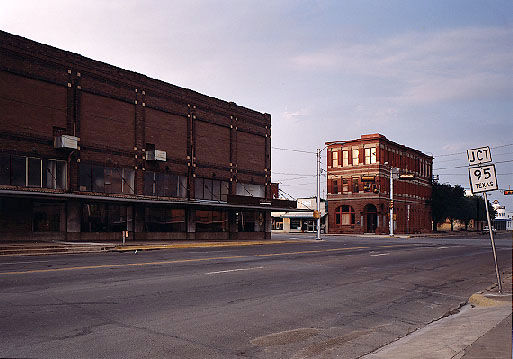We've seen it before.
From animal based transportation, to steam rail transport and then to fossil fuel rail and then road transport we have examples of modes and costs of transportation that drove several shifts along the way.
There are thousands of small towns that sprouted along the rail lines back in the days of predominant rail transport. They displaced many towns that grew along river fords and other animal based transportation corridors. If your town wasn't on the railway, it died.
They now stand mostly deserted as populations shifted to the roadway hubs as paved roads and bridges sprang up, most notably the interstate highway system that along with cheap fuel prices replaced rail transport as the predominant transportation system. Commerce died by the rails, and grew along the interstate highways. If the town wasn't on the interstate, it died.
As transportation costs grow, production will likely shift again back to more localized distributed models, and more efficient transportation like rail transport may become more predominant again and populations shift back tot he rail stop towns that stand empty.
Centralized production using long distance transportation has been cheaper than distributed production due to low cost of transporting goods. If that transport cost rises enough localized production without need for transport can compete again. As well transportation will possibly shift back to more efficient means like rail. Driving shifts of commerce.
For example take Taylor, Tx. Just an interesting case as it's a town I happen to drive through a few times a year.
It got the big rail hub and sprouted into a decently large city...
In 1906, booming rail hub. all produced goods, food, manufacturing whatever, came to Taylor and the railroad for shipment. Those bringing goods bought goods to take back home. Commerce was good.

1940's, as the highways grew, and more or less mirrored the rail system connecting rail stop towns, little changed.

1990's after the interstate highway system bypassed the town 40 miles away, commerce shifted from rail to big trucks, and farmers and manufacturers and buyers of goods shifted commercial activity to Temple, Tx. on the new interstate highway system.

The nearby town of Temple, however, having the interstate highway pass through it and has now boomed from a small town to many times the size of Taylor.
Were transportation to shift back to predominantly rail and away from Interstate highway trucks, Taylor would benefit much.
If we devise a way to maintain the cheap cost of road based truck transport we now use as oil becomes more scarce and expensive, things will continue as they are.
Commerce and an economy always seem to revolve around the transportation system, and the cost of transportation and shift with it in form as well geographically. Even as far back as the age of discovery displacing the overland transportation in the spice trade and the far reaching shifts that created that shaped our world.
Increased fuel cost will also shift our trade balance in foreign goods, in both directions.